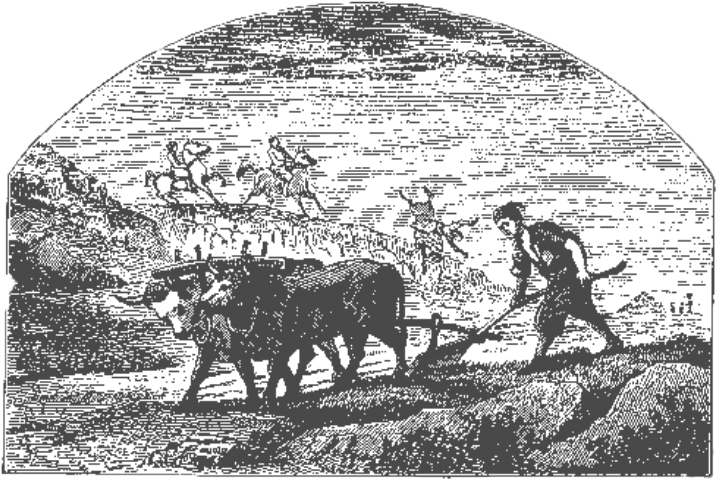The Storm of 1694
|
The Great Sand-Drift was connected with changes in the coast-line, and the sand which overwhelmed Culbin, in the autumn of 1694, came from the west. It came suddenly, and with little warning.
A man ploughing had to desert his plough in the middle of furrow. The reapers in a field of late barley had to leave without finishing their work. In hours the plough and the barley were buried beneath the sand. The drift came on steadily and ruthlessly, covering every object in a mantle of sand. Everything which obstructed its progress speedily became the nucleus of a sand mound. |
IN terrible gusts the wind carried the sand amongst the dwelling houses, sparing neither the hut of the cottar nor the mansion of the laird. The splendid orchard, the beautiful lawn, all shared the same fate. They drove their cattle to a place of safety. A lull in the storm occurred, and they began to think they might still have their dwelling houses, though their lands were ruined forever. But the storm came on with renewed violence, and they had to flee for their lives, taking with them such things as they could carry. |
WHAT a strange scene it must have been; these poor people rushing from their hearths and homes amidst the blinding and bewildering sand-storm. The sand choked the mouth of the river Findhorn, which now poured its flooded waters amongst the fields and homesteads, accumulating in pools until it rose to a height and was able to burst the barrier to the east and create a new outlet to the sea. |
“ON returning, the people of Culbin were spellbound. Not a vestige, not a trace, of their houses was to be seen. Everything had disappeared beneath the sand. The scene which met their anxious gaze that morning was what we now behold — desolate and oppressive enough to us, but how terribly painful and harrowing must it have been to them”.
|
|
|





